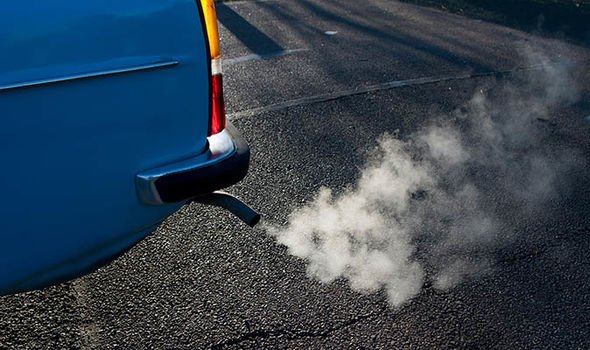Breathe Easy: Strategies for Reducing Diesel Exhaust Emissions
With diesel-powered vehicles and machinery being prevalent across various industries, the need for effective strategies to mitigate their emissions has never been more critical. ETRH is committed to providing efficient diesel emissions service to ensure your vehicle is compliant and environment friendly.
In this post, we delve into the complexities of diesel exhaust emissions and explore innovative strategies aimed at reducing their environmental impact.
Why Reducing Diesel Exhaust Emissions is Necessary?
Diesel exhaust emissions pose significant risks to both human health and the environment. Particulate matter (PM) and nitrogen oxides (NOx) emitted by diesel engines are respiratory irritants, exacerbating conditions such as asthma and bronchitis and increasing the risk of cardiovascular diseases. Long-term exposure to diesel emissions is also linked to lung cancer due to carcinogenic components like benzene and formaldehyde.
Beyond health concerns, diesel emissions contribute to environmental degradation. Nitrogen oxides and volatile organic compounds (VOCs) form ground-level ozone and smog, harming vegetation and ecosystems. Particulate matter settles on soil and water bodies, affecting aquatic life. Moreover, diesel engines emit significant amounts of carbon dioxide (CO2), contributing to climate change.
Reducing diesel exhaust emissions is crucial for public health, environmental protection, and climate action. Key strategies include transitioning to cleaner fuels, adopting emission control technologies, and promoting sustainable practices. Collaboration among stakeholders is essential for enforcing regulations, raising awareness, and driving innovation. By addressing diesel emissions, we can create a healthier and more sustainable future for all.
Innovative Strategies for Emission Reduction
Fortunately, advancements in technology and sustainability initiatives have paved the way for innovative strategies to mitigate diesel exhaust emissions. Here are some key approaches:
Adoption of Alternative Fuels
Transitioning from traditional diesel to cleaner alternative fuels such as biodiesel, compressed natural gas (CNG), or hydrogen can significantly reduce emissions. Biodiesel, for example, is derived from renewable sources such as soybean oil or recycled cooking grease, offering a sustainable and low-emission alternative to petroleum diesel.
Similarly, hydrogen fuel cells produce zero emissions, making them an environmentally friendly option for powering vehicles and machinery.
Electrification of Transportation
The electrification of vehicles and machinery presents a promising solution for reducing diesel emissions. Electric vehicles (EVs) and hybrid-electric systems offer zero-emission operation or significantly lower emissions compared to their diesel counterparts.
With advancements in technology and battery charging infrastructure, the adoption of electric vehicles is rapidly increasing, contributing to cleaner atmosphere and reduced greenhouse gas emissions.
Emission Control Technologies
The implementation of advanced emission control strategies, such as selective catalytic reduction (SCR) and diesel particulate filters (DPF), can effectively reduce NOx and particulate matter emissions from diesel engines.
SCR systems utilize a catalyst to convert harmful NOx emissions into harmless nitrogen and water vapor, while DPFs trap and remove particulate matter from exhaust gases. These technologies remove harmful pollutants from exhaust gases, enhancing air quality and reducing environmental impact.
Engine Optimization and Maintenance
Proper engine tuning, maintenance, and optimization practices can improve fuel efficiency and reduce emissions from diesel-powered equipment. Regular maintenance checks, including filter replacements and emission system inspections, are essential for ensuring optimal performance and emission control.
Regulatory Compliance and Standards
Stringent emission regulations and standards play a crucial role in driving innovation and encouraging the adoption of cleaner technologies in the automotive and industrial sectors. Compliance with emission standards ensures that vehicles and equipment meet strict emission limits, ultimately reducing their environmental footprint.
Government agencies and regulatory bodies play a vital role in enforcing these standards and promoting the adoption of cleaner technologies through incentives, subsidies, and emissions trading programs.
The Role of Collaboration and Awareness
Achieving substantial reductions in diesel exhaust emissions requires collaboration among stakeholders, including government agencies, industries, manufacturers, and consumers. By fostering awareness and promoting sustainable practices, we can collectively work towards a cleaner and healthier environment for present and future generations.
Let's Breathe Easy!
As concerns surrounding environmental sustainability continue to escalate, addressing diesel exhaust emissions remains a paramount challenge. However, through the implementation of innovative strategies, technological advancements, and collaborative efforts, significant progress can be made toward reducing the environmental impact of diesel-powered transportation and machinery.
By embracing cleaner fuels, adopting emission control technologies, and promoting sustainable practices, we can pave the way for a greener and healthier future. Let's breathe easy and commit to mitigating diesel exhaust emissions for the well-being of our planet and its inhabitants.

Comments